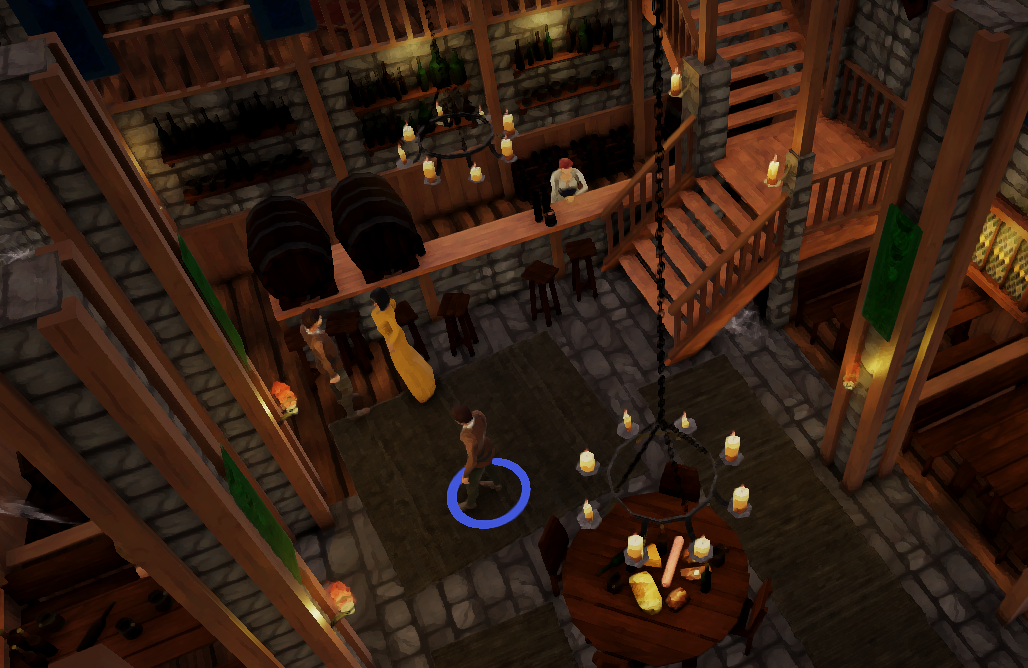cyborgboy95
News Cyborg
- Joined
- Aug 24, 2019
- Messages
- 2,782






























Combat in The Necromancer's Tale
In The Necromancer’s Tale you will be involved in various combats – including early-game fisticuffs, skirmishes with the city guards, wild animals, ambushes from unsavory creatures such as gūls which haunt places of death – and some more magical foes. You’ll be supported by various undead minions as well as some mortal allies – depending on your choices in the game.
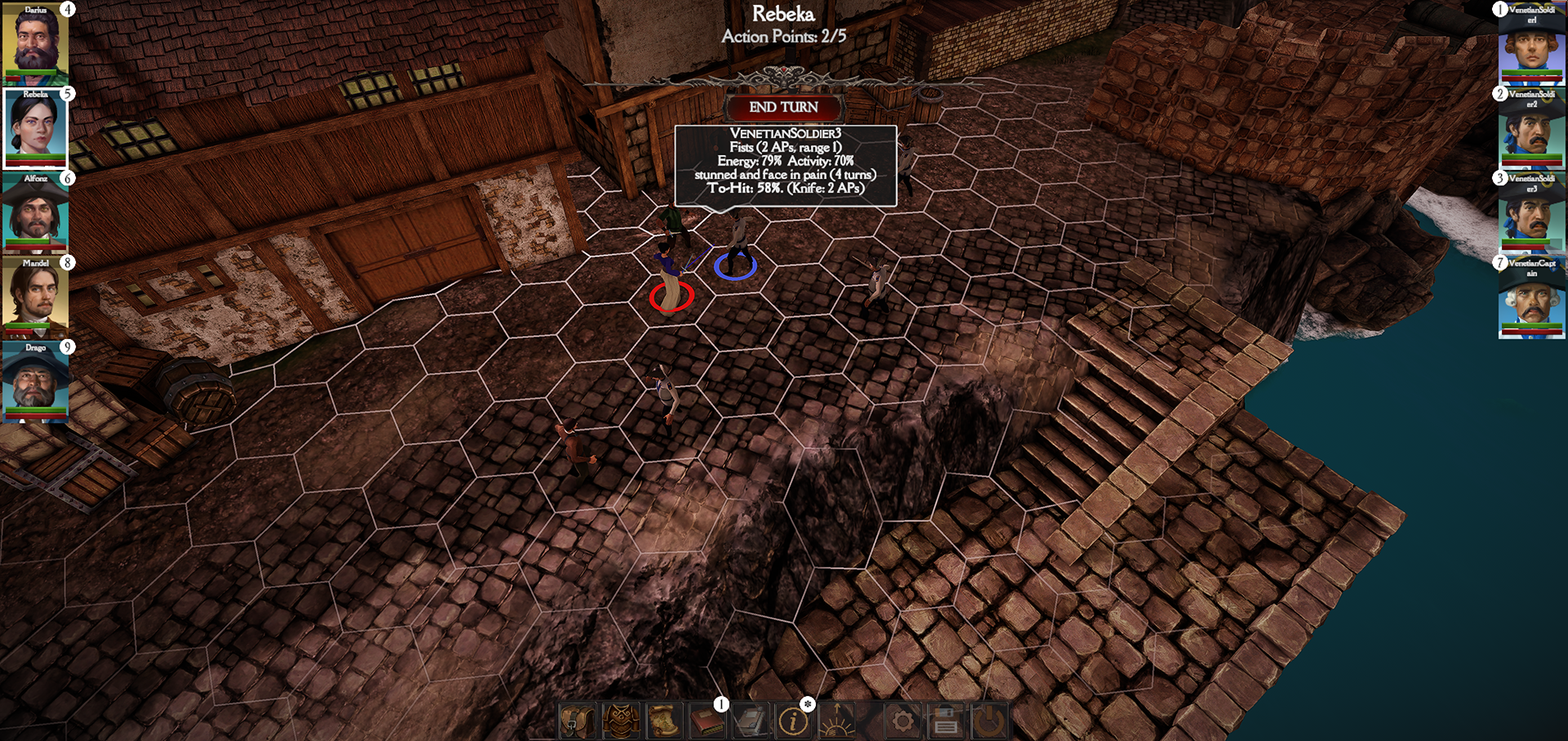
Combat is turn-based and both sequencing and the number of action points available to a combatant is based on their Agility. The combat system draws on our own award-winning tactical combat game Darkwind: War on Wheels[www.dark-wind.com], as well as on our other prototype (unreleased) games and ultimately an Amiga game called Critical Hit[www.psychicsoftware.com] which I released back in 1995. The combat system is simple and quick, yet nuanced and augmented by a critical hits system which adds a lot of descriptive flavor along with mechanical effects.
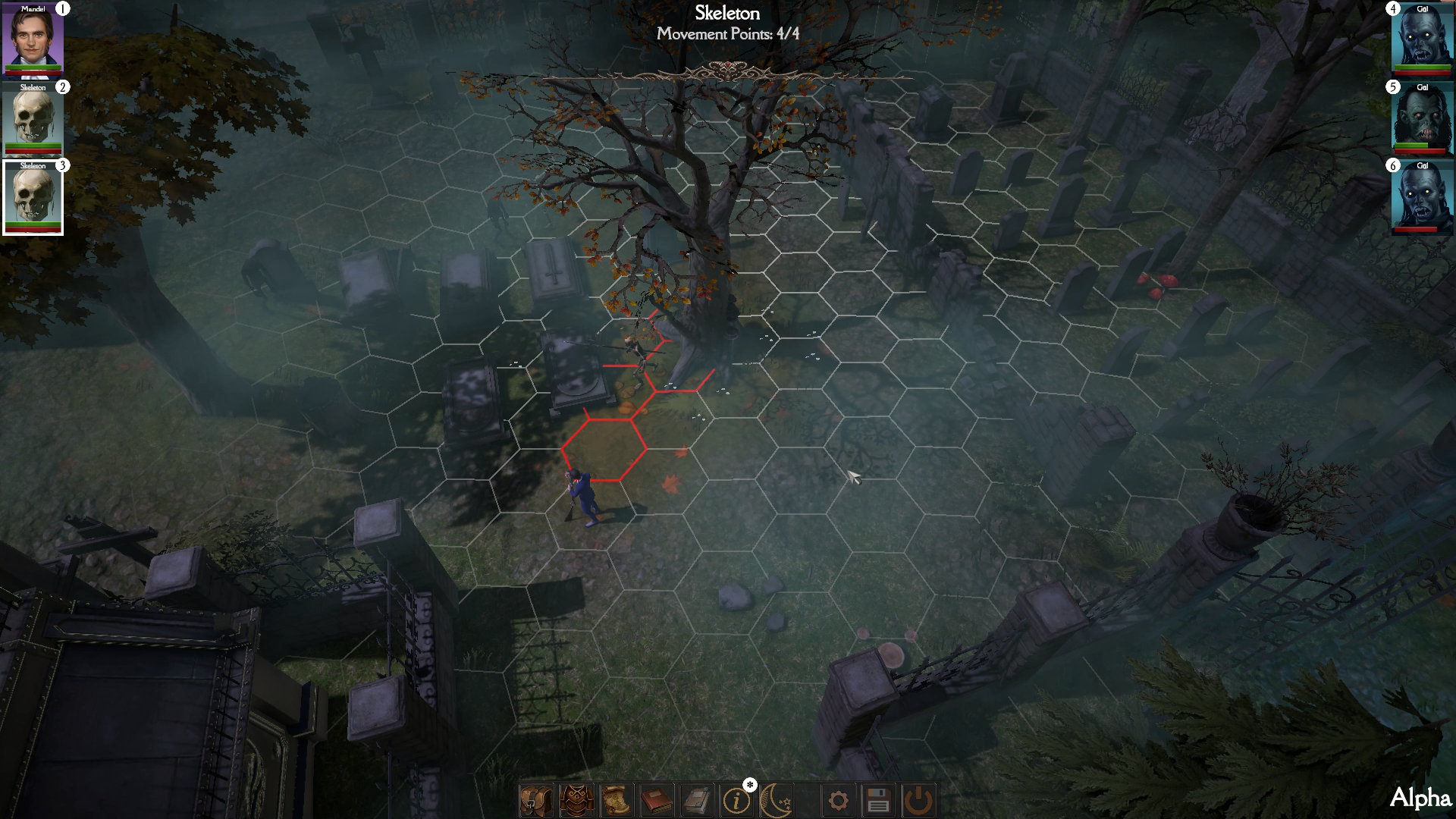
Energy and Activity
Energy and Activity are two very important ratings related to health, which every character has. Each is displayed as a percentage (0% – 100%).
Energy refers to the amount of stamina which a character has remaining. Being hit in combat reduces this, and mortal characters regain energy as time passes. When energy drops to zero, a character falls unconscious. An unconscious character is not necessarily in imminent danger of death, but significant continued damage beyond this may kill them. Certain injuries cause bleeding (unless the character cannot bleed), which causes a continuous loss of Energy as time passes. Without bandaging or rest, a bleeding character will die.
Activity refers to the ability of the character to move about and fight. It is temporarily reduced by certain critical hits (e.g. a broken leg) and by being stunned. When activity drops to zero, a character falls unconscious. When a character’s activity is less than 100%, every physical action they perform (e.g. attacking, defending, or moving – as well as their number of action points) is reduced in proportion. Thus, being stunned can seriously impact a combatant for a few turns.
Energy reduces through physical exertion and becoming tired, while Activity reduces through more serious injury such as broken bones, torn flesh, or concussion.
Weapons
Melee weapons (such as swords or halberds, fists or teeth) are those which are used to physically hit an opponent (at a distance of 1 or 2 hex tiles depending on length of reach), while ranged weapons (such as crossbows and muskets) are used to attack from a distance.
When a combat starts, all ranged weapons are considered to be loaded. After firing in combat, they must be reloaded. The time taken to reload depends on the type of weapon. Muskets, for example, while being the most powerful weapon in the game, are very slow to reload – they take several turns of uninterrupted attention. The game does not track ammunition: a character never runs out of it.
To-Hit Rolls
To hit an opponent, the attacker must have a line of sight that is not blocked by obstacles. The following factors determine how likely an attack is to strike its target:
– The base ‘to hit’ chance of the weapon.
– The distance between attacker and defender (ranged weapons only)- this is moderated by the distance accuracy of the weapon: some weapons are excellent at short range but terrible at long range, while others retain their accuracy at distance better.
– The agility and activity ratings of both the attacker and the defender. The agility factor is more important for ranged weapons than for melee, and beyond 12 metres range this importance increases (essentially, at longer ranges it becomes possible for an agile target to dodge a missile attack or for an agile shooter to counteract that or anticipate it).
– The body size of the defender (i.e. a tiny creature is harder to hit than a huge one)
– A hit is much more likely if the defender is unconscious and close to the attacker
Combat Damage, Critical Hits and Injuries
An ineffective strike will merely cause a small Energy reduction to the defender. An effective strike may also cause one of over 330 different Critical Hits, which include such injuries as broken bones, stun effects, ripped flesh and torn muscles. Critical Hits typically cause both Energy and Activity reduction. These effects will be for a limited time duration, ranging from a couple of combat turns (mild stunning) to several days (broken bones). Some injuries recover in steps: for example, broken ribs will become bruised ribs after some time, with a lesser Activity penalty.
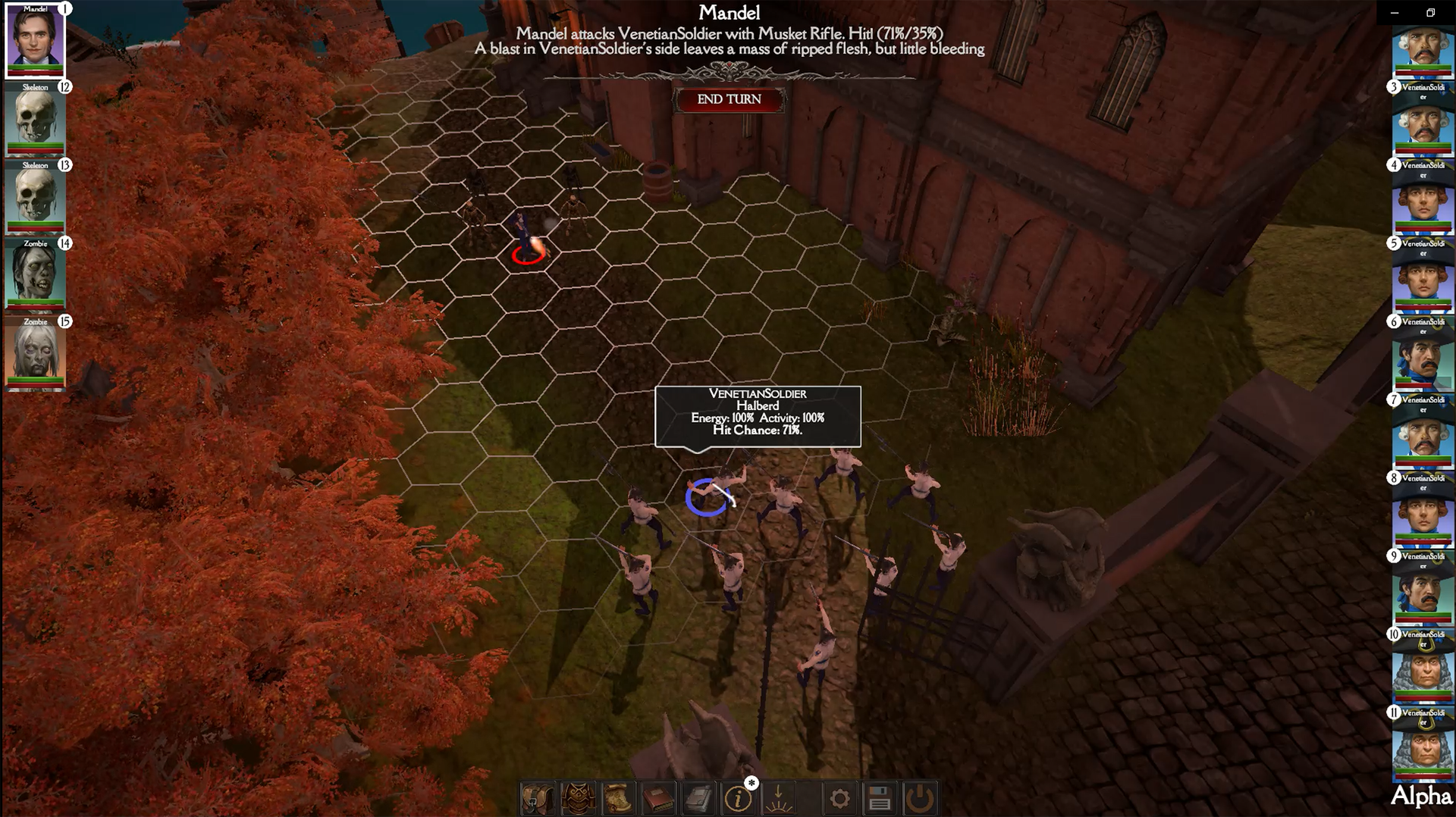
For melee weapons and some ranged weapons, the amount of damage caused is also affected by the Strength of the attacker. If the defender has high Constitution, all damage received is reduced.
Weapon and Armor Types
Each weapon is classified by the type of injuries it causes, as well as its relative effectiveness against unarmored opponents or those wearing leather or metal armor. For example, edged weapons are good against leather but poor against metal, while blunt weapons are moderately good against each.
The types of injury are: bashing, explosion, fire, piercing, and slicing. Bashing weapons will for example tend to cause more broken bones while slicing weapons will tend to cause more bleeding.

One of the rituals in The Necromancer's Tale raises a skeleton to walk again and follow the player's bidding.
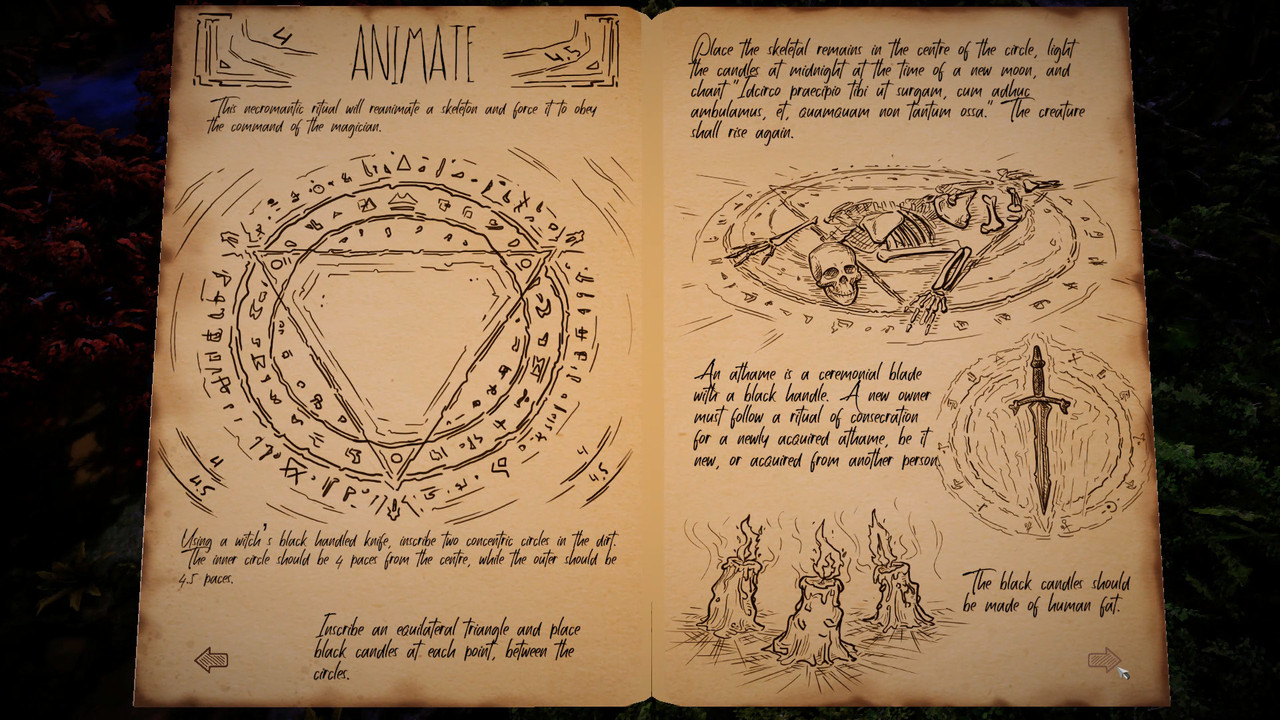
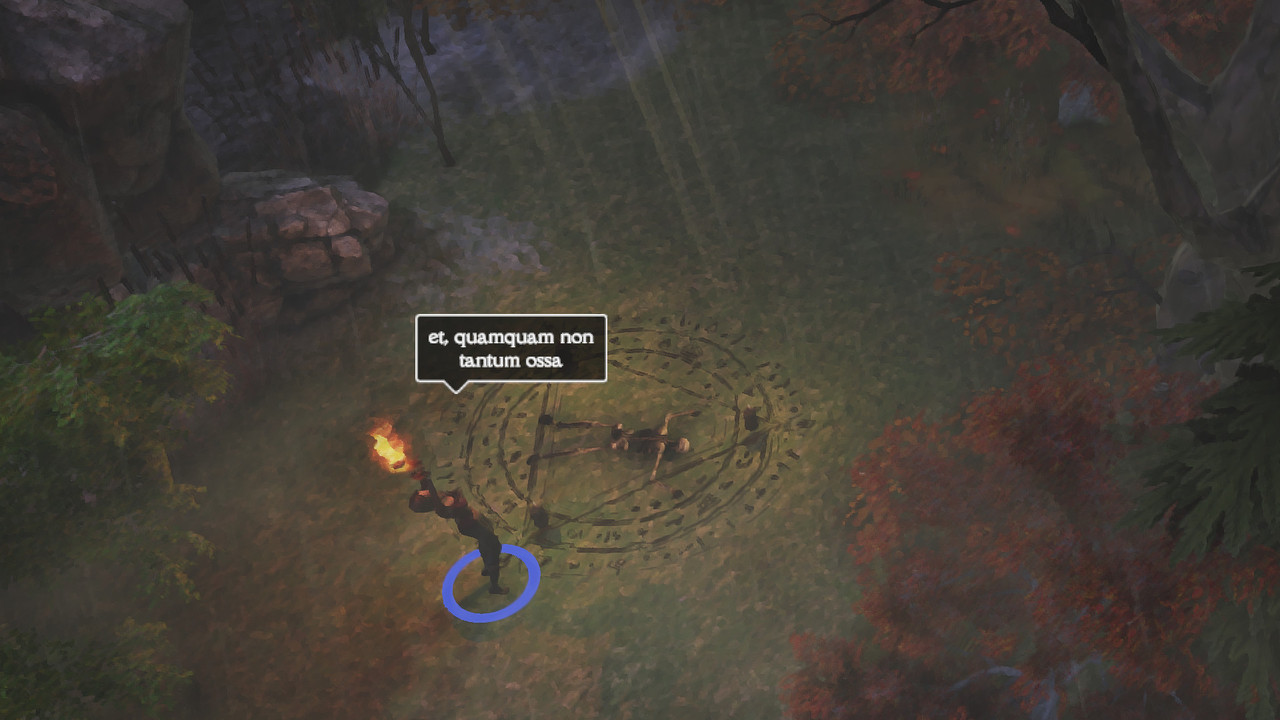















An updated set of gameplay footage showing how The Nectomancer's Tale currently looks. We're making great progress overall!















Trust and Tension in the Necromancer’s Tale
The Necromancer’s Tale has a strong focus on the social aspects of RPG gameplay. The player secretly operates as a black magic practitioner in a medieval city (in 1733) where to be caught would mean certain execution. A lot of play revolves around the social aspects of conversation, coercion, blackmail – and even seduction – whatever it takes for the player to progress their cause. We wanted a game system which would involve decision-making during conversation as well as during more action-oriented play. In short, a system where choices matter – where the player wouldn’t feel that they could just mindlessly click through every conversation option without getting punished. Our system involves two related concepts: Trust and Tension.
Trust
Trust represents the attitude of the NPC townsfolk to the player. Through the use of ‘Trust Groups’ we simulate the behind-the-scenes gossip through which one NPC’s changing attitudes to the player propagates around their social network. For example, if the player acts cruelly to an NPC, then the Trust value will reduce for each of the Trust Groups that that NPC belongs to.
The Trust Groups are:
1 Workers
2 Educated
3 Military
4 Gentry
5 Orphans
6 Outsiders
The player’s uncle Jervase (militaristic baron of the city), for example, belongs to the Military and Gentry trust groups.

The overall trust of the city to the player is calculated from the average of each of the first four trust groups (since no-one really listens to orphans or outsiders). If this overall city trust value drops too low, the player will be tried in court, punished, and perhaps hanged. In the meantime, conversation options are affected by Trust values.
Transgressions
As well as conversation, the game also involves physical activity, of course. The player interacts with objects in the world, moves around, fights (on occasion), and sometimes drags dead bodies back to their home laboratory. Whenever the player is doing something illegal, line-of-sight arcs are displayed for all nearby NPCs. If the player falls within the arc of an NPC, then Trust is affected by the witnessing of the transgression (for the appropriate Trust Groups).
Tension
The second concept in our social system is Tension. This is a number which represents the overall atmosphere of fear in the city. Actions taken by the player which they were not actually witnessed doing will raise Tension but not directly affect Trust. So the player should be careful not to leave dead bodies lying around or bump off too many NPCs – even though they may get away with it at the time.
As Tension rises, the city becomes more heavily patrolled by guards, which in turn makes Transgressions harder to get away with. A high tension value also means that people are more suspicious, harder to deal with in conversation, and more likely to jump to conclusions if the player ends up in court.
The Necromancer’s Tale is in development and you can wishlist it on Steam now, to keep up to date on development progress!
It's not just you, hexes are objectively superior. I assume this has combat and is not another fake RPG.
The true and only(tm) superior way is measuring distances with a ruler on a table!It's not just you, hexes are objectively superior. I assume this has combat and is not another fake RPG.
If you can hit diagonally, squares are superior and the grid looks better and is easier to read for movements and combat purposes.















I used a floorplan overlay as a guide when putting the outline of the game town of Marns together. The town has been a work in progress since 2019!















The CRPG The Necromancer's Tale focuses on the deep process of black magic and spellcasting as the player gets drawn into necromancy.















The initial skills, portrait and backstory of the player character are defined through an interactive fiction which forms the game’s prologue.
Physical, Mental, Social: Systems in The Necromancer’s Tale.
In The Necromancer’s Tale the player character has 9 skills, grouped into 3 groups: physical, mental, and social. This categorization is mirrored in other aspects of the game, including the career path of the player character.
Group 1: Physical Skills
The 3 physical skills are important in combat, as well as being used in skillchecks when attempting other physical tasks.
- Strength refers to physical power, and tasks such as arm wrestling or breaking things.
- Agility refers to speed, agility and dexterity, and affects how fast you move in combat as well as how well you can complete physically awkward tasks.
- Constitution refers to general health, stamina, and the ability to withstand poison or alcohol.
Group 2: Mental Skills
The 3 mental skills are used in skillchecks in order to provide clue-gathering or puzzle-solving options to the player.
- Acuity refers to logical thinking, and the ability to piece together clues to form a conclusion.
- Knowledge refers to knowing important information such as local history, military or medical facts.
- Investigate is the ability to notice important details or out-of-place elements.
Group 3: Social Skills
The 3 social skills are used in skillchecks related to understanding, convincing, coercing, blackmailing or seducing NPCs.
- Analyse is the ability to read other people's truthfulness and intentions.
- Impress refers to your charm: getting people to like and trust you.
- Convince is the ability to tell lies and talk people into doing your bidding.
Career Choice
The initial skills, portrait and backstory of the player character are defined through an interactive fiction which forms the game’s prologue. One of the key choices here is the PC’s career: Military, Academic, or Diplomat. As an 18th Century person of noble birth, the player is lucky enough to have these paths open to them.
Broadly speaking, the military career aligns with the physical skills; the academic career aligns with the mental skills; and the diplomat career aligns with the social skills.
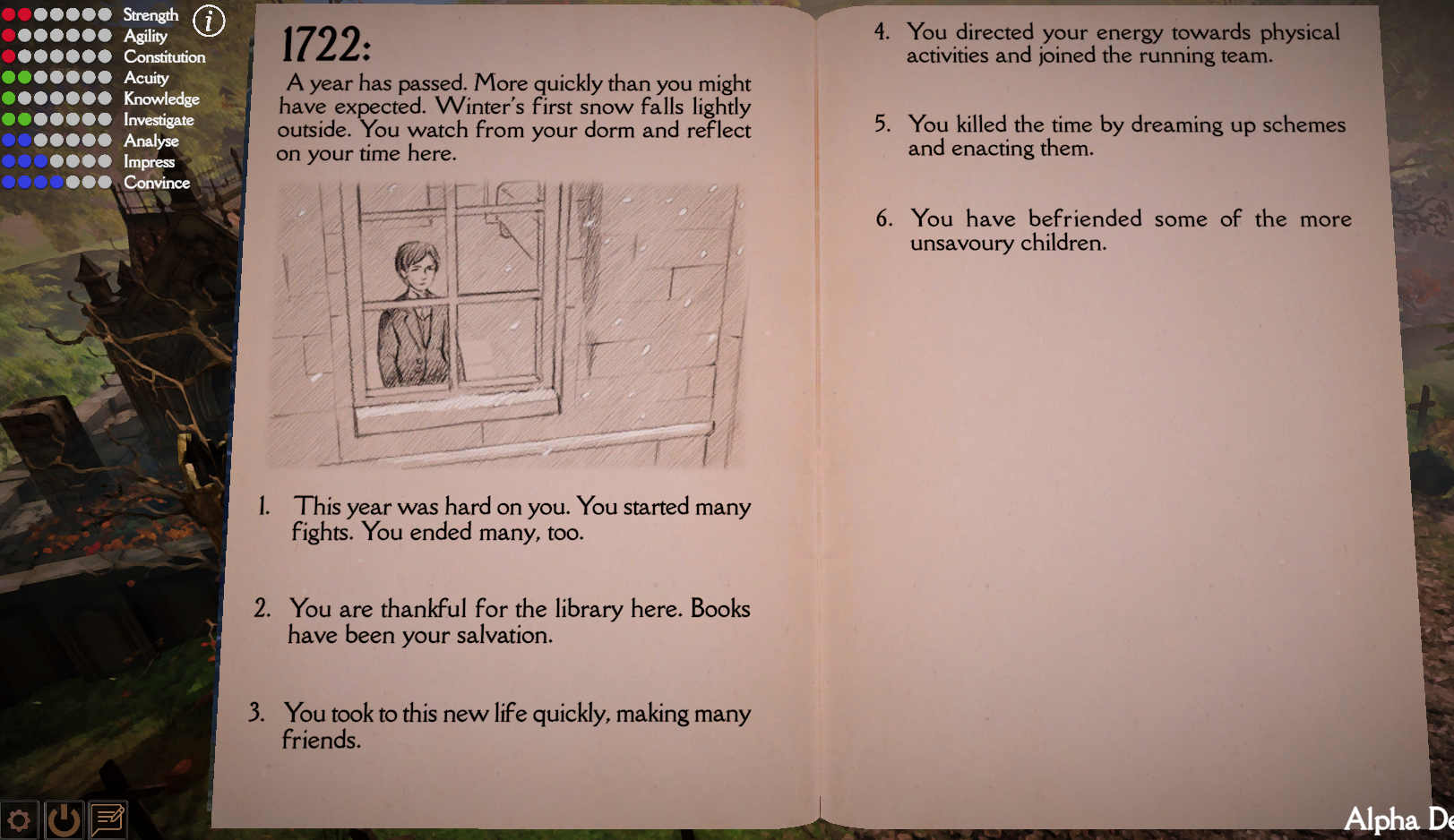
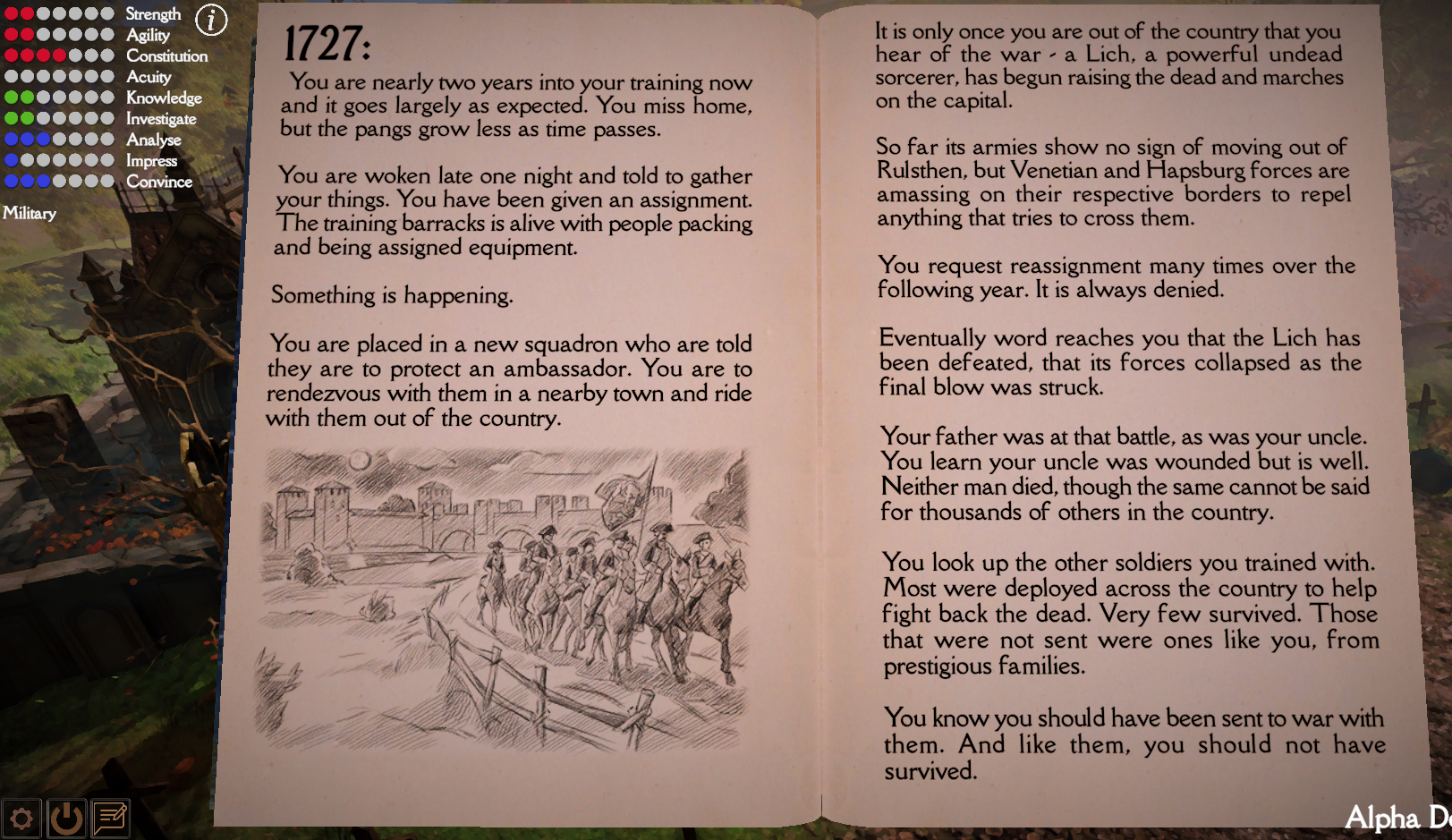
Job Choice
The main game starts with the player arriving back to their home city and deciding that they need to stay for a while and take on a short-term job (their father having just died and left the family finances in turmoil). There are 3 jobs available:
- Dock-worker aligns broadly with the physical skills and will tend to give the player opportunities to mix with distasteful (but useful) people such as fences and smugglers.
- School teacher aligns broadly with the mental skills and gives the player access to a group of orphans who have their ear to the ground and are more than capable of spying or thieving on the player’s behalf.
- Tavernier aligns broadly with the social skills and gives opportunities to mix with and spy on a broad array of denizens who frequent the busiest tavern in the city.
